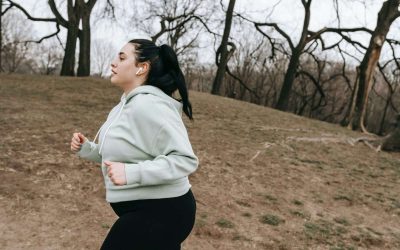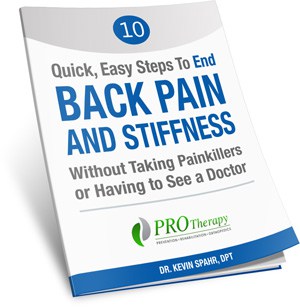Heard this before? It is usually stereotyped as a “casual” activity for people of all ages to enjoy on the weekends. For those that do not have much experience golfing, they think of golf as a sport that includes a little walking, some swings of the club every now and then. While in reality, a golf swing is a violent movement pattern that puts tremendous force and stress throughout our body. Golf can be a VERY physically demanding sport!
Golfing injuries, while very common, can vary!
Golfers are a common athlete we see at PRO Therapy. Golf-related injuries can range from ankle/foot problems from walking and also swinging on uneven surfaces to shoulder pain/tightness from repetitive swings. But, most commonly, we see issues with low back pain and/or tightness making it difficult to even swing a golf club, leaving you missing the activity you love.
So, let’s focus a bit on low back pain in relation to golf!
Want to guess the rate of injuries around the game of golf? Go ahead….15.8 golfing injuries per 100 golfers in 1 year! Also, 46% of those golfing injuries occurred during the golf swing and most of them at the point of contact/impact with the ball. Not too surprising when you break down the why….
The two most cited causes of golfing injuries were poor swing mechanics and overuse. Typically, if a player is not a professional golfer (and let’s be honest, most of us will fall in this category, unfortunately), poor swing mechanics are involved.
Now, breaking down the difference between these two and how they may be related.
There are specific differences in swing biomechanics between professional (low-handicap) golfers and amateur (high-handicap) golfers. Amateur golfers tend to generate more power and club speed using their upper extremity strength rather than their trunk/core rotation. This creates more spinal torque and lateral bending force upon the spine. Professional golfers or low-handicap golfers have superior trunk rotation on the downswing and utilize their increased mobility through the spine to generate more power and disperse the forces around the spine. This less-than-ideal mechanical swing may seem harmless (besides leading to increased variability in the swing/contact) but leads into our next point of overuse.
Overuse comes from the repetitive swinging of a club – a typical 18-hole round includes upwards of 100 forceful swings!
Whether that is practice swings or ball approaches. If you add a practice session a couple times per week, or play multiple rounds per week, the amateur golfer can accumulate upwards of 1000+ forceful swings per week! If our body is not prepared for this amount of repetitive load, we can start to see breakdown (or injury). Think of this as going out and running a half-marathon without training vs. training for a half-marathon. Our body will fair much better with less soreness and injury if we train going into a half-marathon vs. not.
To reiterate….low back pain is the number one injury sustained by golfers at roughly 35% of all injuries.
As mentioned above, the lumbar spine (low back) absorbs a large amount of force during the swing. These loads occur in four different planes: compression, shear, lateral-bending, and rotation. Compression forces equal up to approximately 8x a person’s bodyweight. Typically, low back pain comes on asymmetrically (one sided) with golfers and more often on the trail side of the swing (i.e. right sided pain with a right handed golfer). The most common low back injuries include lumbar muscle strains, joint irritation, and stress fractures (adolescents).
This combination of forces requires the paraspinal muscles, or erector spinae, to stabilize the spine during peak effort. Meaning, when the force needed to stabilize is greater than the force the muscle can produce, the muscle can strain and cause pain. More below on how to strengthen your lower back!
In the final follow through of the swing phase, if we get to a reverse-C finish (right) repetitively, we can increase the “extension” load through the joints of the spine and cause irritation of those joints. This typically shows up as a very specific one- or two-sided pain and can be treated as well.
In younger golfers (i.e. adolescents), repetitive golf swings with poor mechanics, muscular strength, and overuse can lead to what we call a spondylolysis (lumbar stress fracture). This is an injury that requires strengthening, rest from golf swings, and core training.
Let’s chat Modern Swing vs. Classic Swing…
There are two typical golf swings that golfers utilize, the modern swing and the classic swing.
Back Swing:
- Modern: Separate hips and shoulders (shoulders rotate around hips)
- Classic: Hips and shoulder rotate together
Top of Backswing:
- Modern: Separate hips and shoulders as much as possible, pivot on trail leg
- Classic: Hips and shoulders have same rotation amount, body sway to trail leg
Downswing:
- Modern: Hips start the downswing, then shoulders/arms
- Classic: Entire body starts downswing together
Impact:
- Modern: Hips open to target more than shoulders; increased lateral trunk flexion towards trail leg
- Classic: Hips and shoulders open together; minimal trunk flexion toward trail leg
Follow Through:
- Modern: Reverse-C finish
- Classic: lumbar spine neutral
The modern golf swing requires much more trunk flexibility and core strength to be able to rotate the hips and shoulders separate. This creates more torque on the low back. This is typically performed by advanced golfers who need to be able to produce the maximal force through impact.
Ok, so how do we prevent lower back golfing injuries?
The best low back injury prevention program is, at its simplest form, a solid core and lower body strengthening and hip mobility routine. This should be done in a progressively overloaded fashion, meaning it shouldn’t always be the same weight for the same amount of repetitions. Rather, on a weekly or bi-weekly basis, continuing to challenge the body as you get stronger.
This is also the basis of a low back injury rehabilitation with golfers. The goal with rehabilitation is to improve core and low back strength in a relatively pain free fashion. This may include lower scale variations of previously done exercises to promote a pain-free training routine. The goal is to promote strength adaptations in the body to address and adapt to the amount of force a golf swing puts into your body.
This program should/would include a variation of these four major strength variations: bridge, anti-rotation core strength, rotational core, and single leg hip strengthening. Hip mobility variations should address hip internal and external rotation as well as any flexion/extension deficits the golfer may have. Variations include:
Strength:
- Bridge: double leg bridge with weight as able, single leg bridge, bridge walkouts, cook hip lift
- Anti-rotation core strength: Pallof press, Pallof press step outs, plank with arm and leg lifts, birddogs, birddog rows
- Rotational Core: cable/band lifts, cable/band chops, Pallof press rotations
Mobility:
- Internal Rotation: hip switches, 9090 lift offs, 9090 banded internal rotation with a foam roller
- External Rotation: pigeon/modified pigeon, lateral banded distraction
Looking for a low back warm up?
A common strategy that most folks utilize to prepare their low back for some golf swings is to adequately stretch and warm-up before the golf round. You often hear people recommend stretching your hamstrings, shoulders, hips, etc. before swinging. This is all good advice, and we recommend plenty of stretching before and after your rounds. But, there is a more “bang for buck” option to help prevent low back pain.
Strengthen your core! You can stretch all day to improve your hip and low back mobility to have that great feeling of a “nice and mobile” backswing, but if you’re lacking the core strength to support your back in that position, you’re increasing your risk of injury. So often we hear people come in and tell us that they have worked on improving their flexibility to help with swing mechanics, but they experience no change in ball distance AND they now have more back pain than before when they were not stretching!
For our back to tolerate all that rotation and force generation with swinging a golf club, we need to appropriately strengthen our “core.”
I am sure you are now asking, what do we mean when we say the “core?”
When we reference the “core,” this would include any muscles in the abdominal region that help provide support to our spine. They keep us standing upright, keep us from falling to the side, help maintain balance and much more. Most importantly, our core muscles allow our arms and legs to move quickly without the rest of our body falling with it…a prime example would be during a golf swing!
So, if you are finding yourself frustrated with low back pain during your golf swing, we highly recommend starting a core strengthening program. Start with some planks. We love the benefits from planking and side-planking to engage the exact same muscle groups used during a golf swing. Start with performing 3-4 rounds of a plank at a time that you can maintain good form. Have the goal to work on planks 3 days a week and progressively add 5-10 seconds every week.
Interested in learning more about how you can improve your core strength to help prevent or eliminate low back pain during a golf swing? Feel free to give us a call to speak directly with one of our expert Physical Therapists.
- Can I Have Physical Therapy for Arthritis? - December 5, 2024
- Rehabilitation for a Car Accident- Recover PRO Therapy - November 26, 2024
- MVA Post-Surgery Rehabilitation - November 18, 2024











